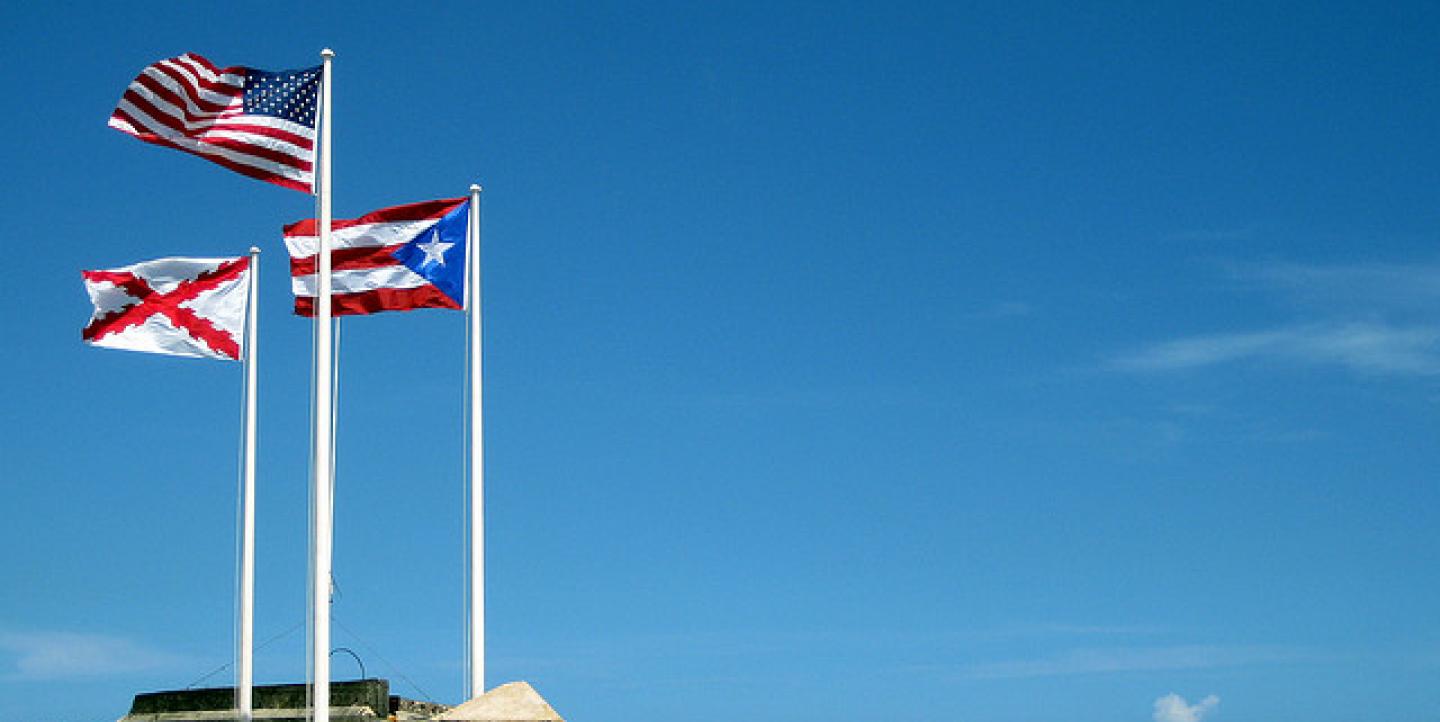Puerto Rico seems to be everywhere in the U.S. media these days, its economic crisis prompting an unprecedented amount of news coverage about the island. Some outlets have even suggested that the on-the-brink financial situation is the Caribbean’s equivalent of the Greek crisis, drawing international parallels.
Much of the media coverage is shoddy, however, overlooking--or unaware of--the historical complexities that characterize the Caribbean island and its people, who are referred to as “boricuas,” a name that references Borikén (or Borinquén), the indigenous name of the island.
Here’s a primer that covers the basics of this nuanced geographical and cultural beat.
Puerto Rico is not a country.
Since 1898, Puerto Rico has been a holding of the United States, a spoil acquired in the Spanish-American War. Before that, Puerto Rico was a colony of Spain. Eight criteria are used to determine whether a land mass is a country and Puerto Rico meets only three of these.
Puerto Rico is technically a “free associated state.”
Between 1898 and 1952, Puerto Rico essentially existed in limbo, tied to the United States, but many of the nuances of its relationship unclear. Though its people were granted U.S. citizenship through the Jones Act, signed by President Woodrow Wilson in 1917, that act left many of the finer details of the U.S.-Puerto Rico relationship unresolved.
It was not until 1952 that Puerto Rico was declared a “free associated state,” itself a complicated status that renders it neither independent from nor fully dependent upon the United States. (Referred to as “el estado libre asociado” in Spanish, it’s more commonly translated to “commonwealth” in English). It is not correct to call it a territory or a colony (though it is true that the relationship with the U.S. is colonialist in nature and impact), and while it is often referred to in the media as a commonwealth, it is not a commonwealth in the way that the U.S. state of Massachusetts, for example, is a commonwealth.
The benefits of citizenship are partial.
There are many areas in which the full privileges and responsibilities of U.S. citizenship are not extended to Puerto Ricans. One of the most important of these is the right to vote and congressional representation. While Puerto Ricans can vote in presidential primaries, they can not vote in the final elections. And while they have a representative in Washington, D.C., whose official title is “resident commissioner,” that individual has no final voting power in Congress; the resident commissioner may only make recommendations, express concerns and introduce bills.
Puerto Rico’s political parties are not the same as those on the mainland U.S.
While it is believed that most Puerto Ricans would choose an affiliation with the Democratic party if they moved to the mainland, the Democratic and Republican parties are not part of the party system on the island. The Puerto Rican Independence Party (PIP), New Progressive Party (PNP), and Popular Democratic Party (PPD) are the main parties, with each defined primarily by its stance with respect to Puerto Rico’s status (PIP advocates independence, PNP advocates statehood, and PPD advocates continuation of the commonwealth/free associated state). Three additional parties are registered by the electoral board but are less popular.
Puerto Ricans have voted for statehood, but that doesn’t mean they’ll become the 51st state.
Puerto Rico occasionally holds a referendum in which islanders vote on “the status issue,” casting their ballot for statehood, independence or maintaining the status quo of the free associated state relationship. The most recent referendum in 2012 resulted in widespread support for statehood; however, the island’s declaration that it wants to be a state doesn’t necessarily mean it will become the 51st state. For that to happen, the U.S. Congress would have to admit the island as a state, which is unlikely to happen.
Yes, there’s a significant population exodus, but that’s not the whole story.
As multiple outlets have reported, Puerto Rico is experiencing what many analysts consider to be an unprecedented exodus among islanders, who are choosing to move to the mainland U.S., often for improved economic opportunities. However, the exodus statistics are rarely put into context; most journalists and economic analysts aren’t looking at the overall population figure--3.6 million residents-- which is high considering the small size of the island: 100 miles long by 35 miles wide.
Puerto Rico’s current fiscal problems are rooted in decades of colonialist policies.
To understand Puerto Rico’s current economic crisis, which involves a US$72 billion debt that the governor has said can not be repaid, one must go back decades and look at the colonialist policies and interventions imposed on the island by the United States. From the Foraker Act of 1900, which established the structure of the island’s government, to the mid-century reform plan named Operation Bootstrap, which radically shifted Puerto Rico from an agrarian to industrial way of life, Puerto Rico’s economic policies and procedures have largely been directed by interests on the U.S. mainland.
These have rarely benefited Puerto Ricans themselves. The pattern continues even today, with hedge funds representing just one area of instability introduced by mainlanders seeking to take advantage of their island outpost.
For journalists who want to stay tapped into what’s happening on the island, local daily newspapers El Nuevo Día and Primera Hora are available online, as is the left-leaning weekly, Claridad. The free daily, Metro, also has a Puerto Rican edition and is available online.
Image CC-licensed on Flickr via k1ng

